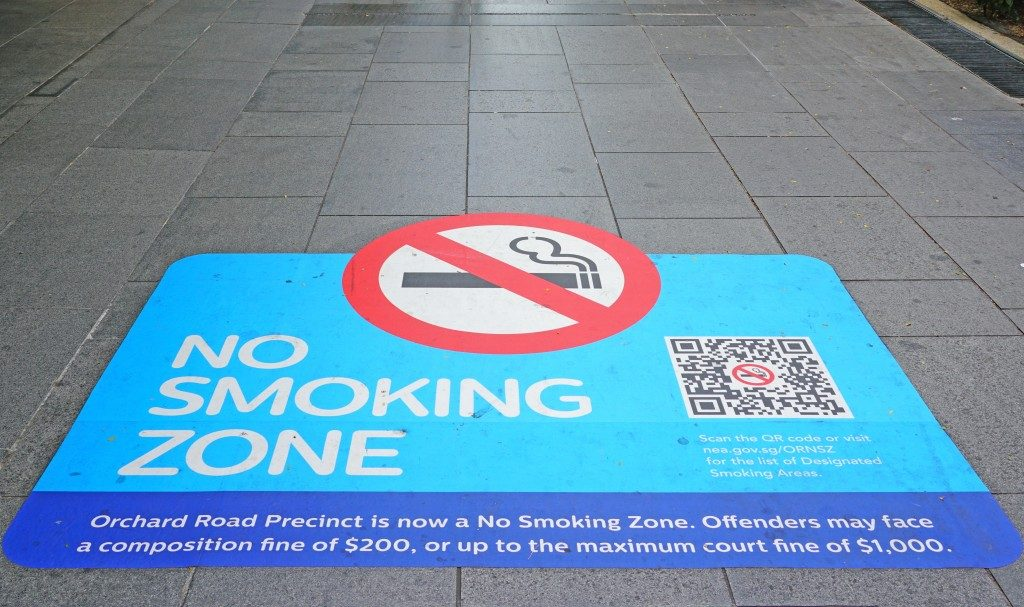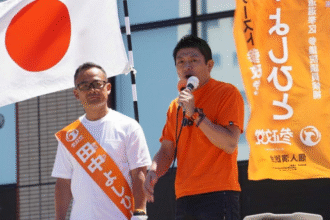Singapore’s Smoke-Free Dream Faces Real-World Resistance
When Kevin Wang moved to Singapore in 2016 from Paris, he didn’t expect to quit smoking. Yet within a year, he did thanks largely to the country’s tightly regulated public spaces and almost blanket ban on smoking in many outdoor areas.
Wang’s story is a success that Singapore’s health authorities hope to replicate nationwide. Smoking is now prohibited in parks, public beaches, residential common areas, and even much of Orchard Road, where only yellow-box smoking zones permit lighting up.
But not every smoker reacts the same way.
Salihan, an IT executive, still smokes as much as ever. Though smoking points are sparse in the Central Business District, he now compensates by smoking more per break. “Instead of three times, I’ll just smoke three sticks in one go,” he explained.
Singapore’s approach tightening laws, raising tobacco taxes, and limiting access has yielded results. Daily smoking rates dropped from 13.9% in 2010 to 8.8% in 2023, according to the Ministry of Health. Yet that remaining figure shows the limits of regulation alone. Some still hold fast to cigarettes. Others shift to vaping despite its outright ban.
A Long History of Smoking Restrictions
Singapore’s first formal crackdown came in 1992 with the Smoking (Prohibition in Certain Places) Act. Over time, restrictions expanded from air-conditioned offices (1994) to entertainment outlets (2007), and later to residential blocks and Orchard Road.
In 2022, public parks and recreational beaches joined the no-smoking list. These areas now rely on Designated Smoking Points (DSPs) legal smoking areas marked by signage and often minimal infrastructure.
MP Carrie Tan of Nee Soon South noted that these zones have helped balance community needs. “We don’t receive many complaints from residents about secondhand smoke,” she said.
Other towns like Clementi have also experimented with cooled or air-conditioned smoking cabins. However, these have seen mixed success both in terms of smoker satisfaction and scale of implementation.
Smokers Speak Out The Other Side of the Story
Yet, enforcement and infrastructure are only part of the equation. Smokers often find DSPs either inconvenient or unpleasant.
Madam Quek, 62, prefers not to enter smoking points when crowded. “The smell stays on my clothes. I’d rather sit nearby and let the wind carry it away,” she said.
Another smoker, Ah Kee, pointed to poor maintenance. “The bins inside overflow. That’s why I smoke next to the green bin.”
Even the high-tech air-conditioned booths have failed to win hearts. Mr Jasman Mohammed, 44, complained about poor ventilation. “The smell gets unbearable when there are more people inside.”
Mixed Outcomes: Who’s Quitting, Who’s Not
Some smokers like Kevin Wang found enough motivation in Singapore’s environment to quit. Others, like Robert Fernando, simply adapted avoiding smoke-free zones altogether.
“There’s no point going to Orchard Road anymore. It takes my freedom away,” said the 65-year-old.
Some switch to vaping, despite the illegality. One creative director in his 30s said vaping was easier. “No smell, better flavors, and you can do it almost anywhere even indoors.”
The problem is so prevalent that enforcement has intensified. In Dec 2023, a joint operation at Changi Airport nabbed 177 vape offenders. Schools now refer repeat vaping students to cessation programs and, in some cases, to the Health Sciences Authority.
According to Sean Ang, a cessation coach, some smokers try vaping to quit, only to get addicted to both. “None of my clients who started vaping have quit successfully,” he said.
How Close Is Singapore to Becoming Smoke-Free?
Globally, a “smoke-free” nation is defined as one with a daily smoking rate below 5%. Singapore stands at 8.8% within reach, but not quite there.
Dr Yvette van der Eijk from NUS believes bolder policies are needed, like:
-
Reducing nicotine levels in cigarettes
-
Banning menthol and flavored tobacco
-
Implementing inflation-linked tobacco tax hikes
-
Generational smoking bans, like banning tobacco sales for anyone born after a specific year
Shorter-term solutions could include banning smoking at outdoor dining areas in bars and coffee shops, places that often encourage “social smoking.”
“There’s no right to smoke. It’s a harmful habit that impacts others around you,” Dr van der Eijk asserted.
What More Can Be Done?
Experts argue that restrictive laws must be paired with better support systems.
Nicotine Replacement Therapy (NRT) including patches and sprays is still not subsidized in Singapore and often requires a prescription. Making them more accessible, especially to youth, could help more smokers quit.
“Let pharmacists dispense NRT,” Sean Ang urged. “The more accessible it is, the more lives we can change.”
Secondhand Smoke and Public Tension
The public debate continues. Some smokers say they follow the law but feel unfairly judged.
“We keep to the smoking areas. People complain just walking past. It’s not fair,” said Jane Tan, a 36-year-old barista.
MP Louis Ng believes stronger protections are needed for non-smokers, proposing bans on smoking near windows and balconies. “Smoke inside your home if you must,” he said. “But don’t let it drift to your neighbors.”
Fellow MP Carrie Tan added that tackling smoking might require tackling root causes like stress and mental health. “It’s often a coping mechanism,” she noted.
The Last Few Miles
Singapore has come a long way in reducing smoking prevalence, but challenges remain. Vaping, persistent smokers, and access to cessation tools all need urgent attention.
As the city-state inches toward becoming truly smoke-free, the balance between public health, personal freedom, and addiction support remains delicate but achievable.






